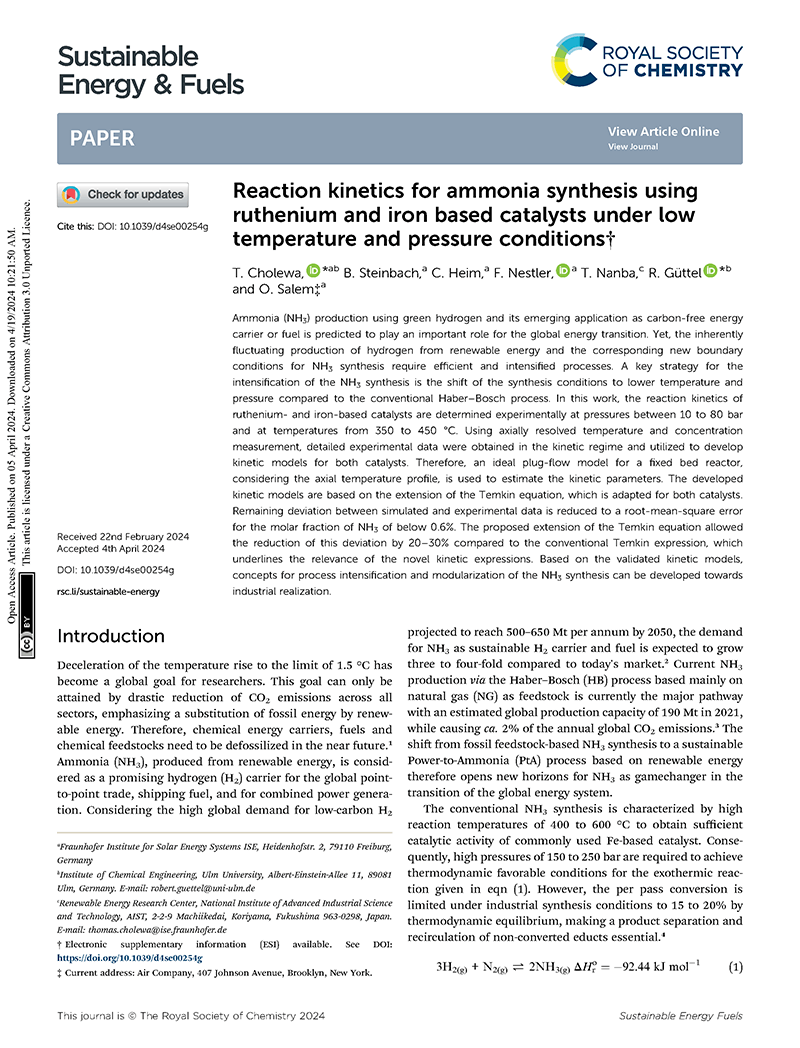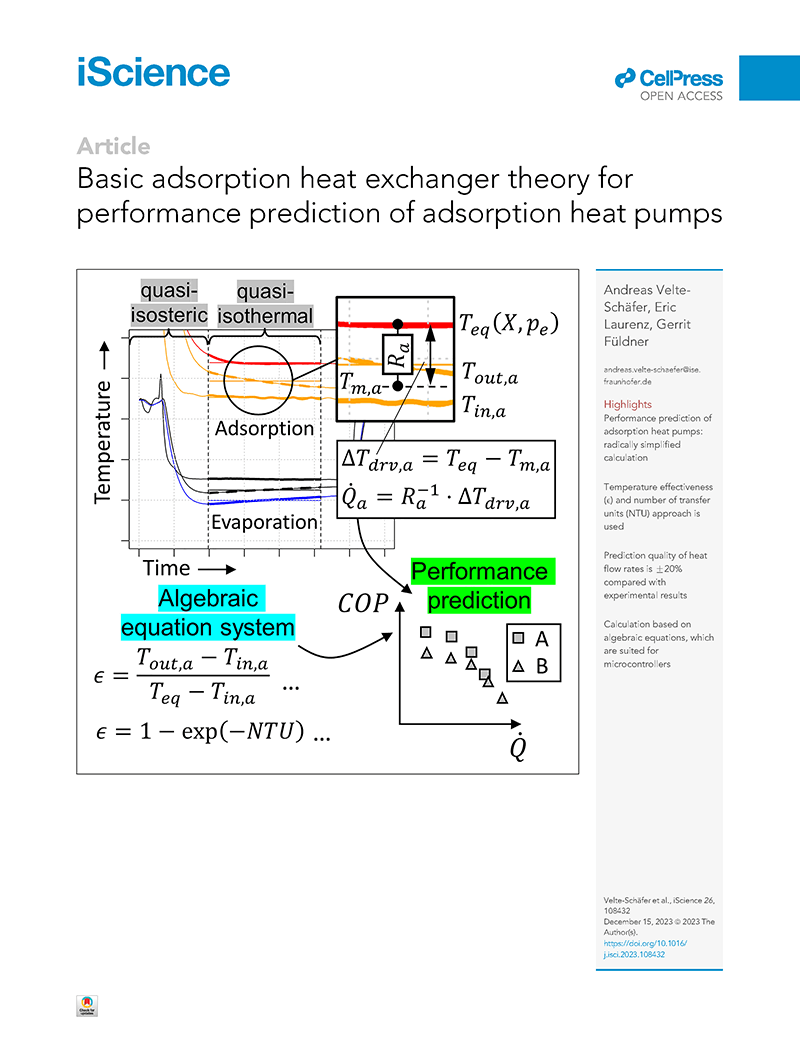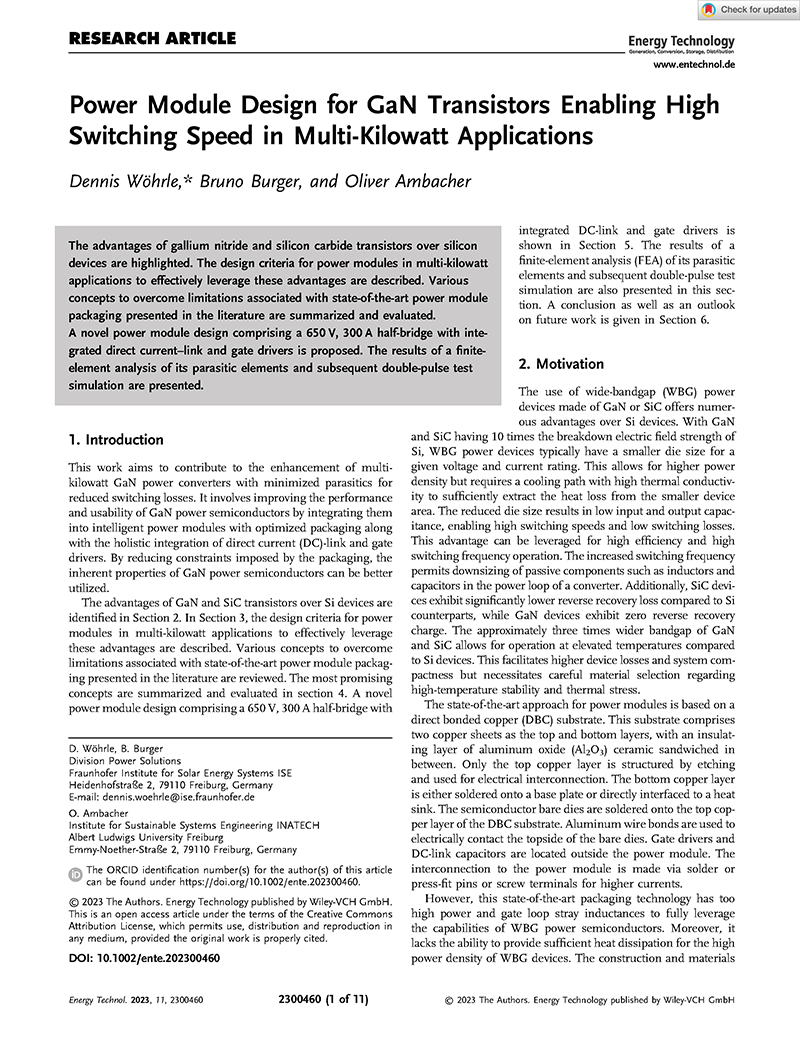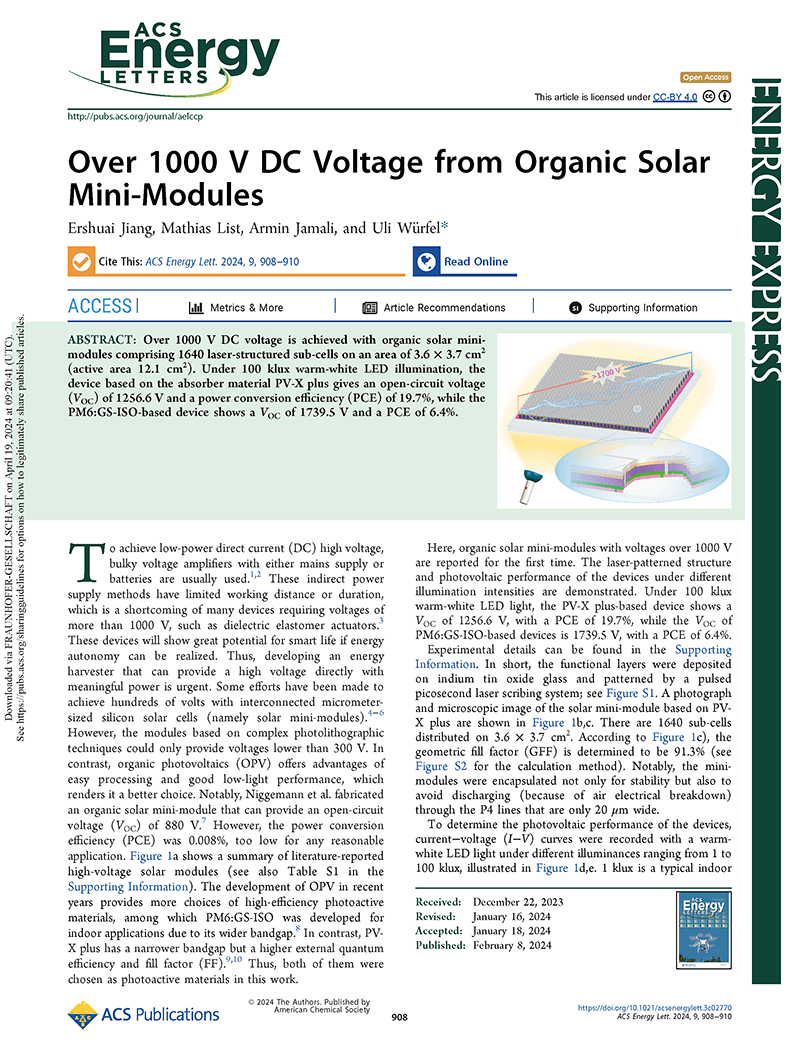ACS Energy Letters | 9, 3, 908-910 | February 8, 2024
Ershuai Jiang, Mathias List, Armin Jamali, and Uli Würfel
When connecting organic solar cells to a module in series, efficient structuring using lasers is essential in order to minimize the inactive area as much as possible. In the meantime, there are a number of interesting applications that require only low electrical power but high voltages of a few hundred to a few thousand volts. These include, in particular, so-called dielectric elastomer actuators, but also applications such as electro-aerodynamic propulsion.
The article reports on the development of organic solar modules, which consist of 1640 laser-structured, series-connected cells on an area of 3.6 x 3.7 cm2. Under 100 klux warm white LED light, an open-circuit voltage (VOC) of 1256.6 V and a power conversion efficiency (PCE) of 19.7% could be achieved with the organic absorber material PV-X plus, while a VOC of 1739.5 V and a PCE of 6.4% could be achieved with PM6:GS-ISO. These values are considerably higher than anything previously reported in the literature for these small areas. The work was carried out in cooperation with the University of Freiburg in the framework of the DFG funded excellence cluster livMatS.



